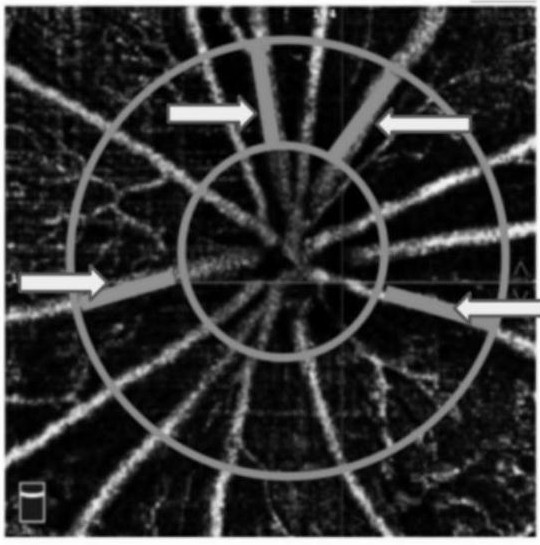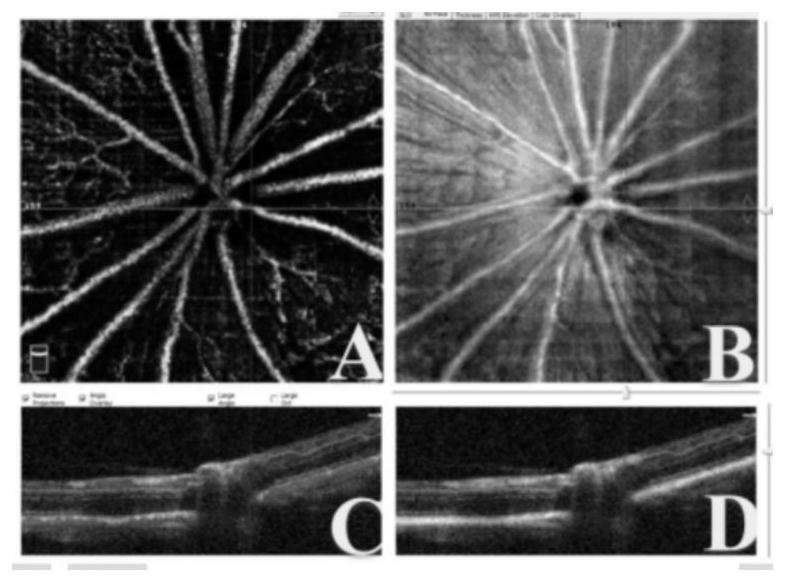A method for establishing an animal model of retinal edema
A retinal edema and animal model technology, applied in medical science, veterinary instruments, animal husbandry, etc., can solve the problems of retinal atrophy, vascular damage to the retina, and increased retinal damage, achieving small trauma and good repeatability
- Summary
- Abstract
- Description
- Claims
- Application Information
AI Technical Summary
Problems solved by technology
Method used
Image
Examples
Embodiment 1
[0046] Example 1: Establishment of retinal edema model using BN rats
[0047] Step 1: Preparation of Rose Bengal Solution
[0048] Under the condition of avoiding light, accurately weigh 50 mg of Rose Bengal powder, place it in a 1.5 ml brown EP tube, add 1.0 ml of normal saline, and mix well. After filtering three times with a 0.22 μm sterile filter, the prepared Rose Bengal solution (50 mg / ml) was stored at 4° C. for use.
[0049] Step 2: BN rat preparation
[0050] Four female BN rats, aged 7-8 weeks, with an average body weight of 150 g, were intraperitoneally injected with 10% (w / w) chloral hydrate (0.3 ml / 100 g). After anesthesia, compound tropicamide eye drops fully dilated mydriasis, slit lamp, OCTA / OCT examination, records ( figure 2 ). Fix the rats and fully disinfect the tail with 75% alcohol. 50mg / ml Rose Bengal solution (0.1ml / 100g) was left to stand at room temperature for 10 minutes and then injected into the tail vein of rats. After the injection, it was ...
Embodiment 2
[0058] Example 2: Establishment of retinal edema model using C57BL / 6 mice
[0059] Step 1: Preparation of Rose Bengal Solution
[0060] Under dark conditions, accurately weigh 25 mg of Rose Bengal powder, place it in a 1.5 ml brown EP tube, add 1.0 ml of normal saline, and mix well. After filtering three times with a 0.22 μm sterile filter, a Rose Bengal solution (25 mg / ml) was prepared and stored at 4° C. for future use.
[0061] Step 2: C57BL / 6 mouse preparation
[0062] 15 female C57BL / 6 mice, 6-8 weeks old, with an average body weight of 20g, were injected intraperitoneally with 10% (w / w) chloral hydrate (1ml / 100g), and after anesthesia, compound tropicamide eye drops were fully administered. Mydriasis, slit lamp, OCTA and OCT examination, records. Fix the mouse and fully disinfect the tail with 75% alcohol. 25mg / ml Rose Bengal solution (0.5ml / 100g) was left to stand at room temperature for 10 minutes and then injected into the rat tail vein. After the injection, it wa...
PUM
 Login to View More
Login to View More Abstract
Description
Claims
Application Information
 Login to View More
Login to View More - R&D
- Intellectual Property
- Life Sciences
- Materials
- Tech Scout
- Unparalleled Data Quality
- Higher Quality Content
- 60% Fewer Hallucinations
Browse by: Latest US Patents, China's latest patents, Technical Efficacy Thesaurus, Application Domain, Technology Topic, Popular Technical Reports.
© 2025 PatSnap. All rights reserved.Legal|Privacy policy|Modern Slavery Act Transparency Statement|Sitemap|About US| Contact US: help@patsnap.com



